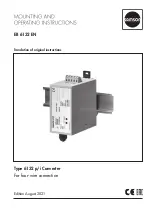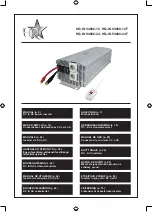
©
Xiamen RGBlink Science & Technology Co., Ltd.
Ph: +86 0592 5771197 | support@rgblink.com | www.rgblink.com
36
●
Brightness:
Usually refers to the amount or intensity of video light produced on a screen without regard to colour.
Sometimes called black level.
●
Contrast Ratio:
The ratio of the high light output level divided by the low light output level. In theory, the
contrast ratio of the television system should be at least 100:1, if not 300:1. In reality, there are several
limitations. Well-controlled viewing conditions should yield a practical contrast ratio of 30:1 to 50:1.
●
Colour Temperature:
The colour quality, expressed in degrees Kelvin (K), of a light source. The higher the colour
temperature, the bluer the light. The lower the temperature, the redder the light. Benchmark colour
temperature for the A/V industryinclude 5000°K, 6500°K,and 9000°K.
●
Saturation:
Chroma, Chroma gain. The intensity of the colour, or the extent to which a given colour in any image is
free from white. The less white in a colour, the truer the colour or the greater its saturation. Saturation is the amount
of pigment in a colour, and not the intensity.
●
Gamma:
The light output of a CRT is not linear with respect to the voltage input. The difference between
what you should have and what is actually output is known as gamma.
●
Frame:
In interlaced video, a frame is one complete image.A video frame is made up of two fields, or two sets of
interlaced lines. In a film, a frame is one still image of a series that makes up a motion image.
●
Genlock:
Allows synchronisation of otherwise video devices. A signal generator provides a signal pulses which
connected devices can reference. Also see Black Burst and Color Burst.
●
Blackburst:
The video waveform without the video elements.It includes the vertical sync, horizontal sync,
and the Chroma burst information. Blackburst is used to synchronize video equipment to align the video
output.
●
ColourBurst:
In colour TV systems, a burst of subcarrier frequency located on the back part of the composite
video signal. This serves as a colour synchronizing signal to establish a frequency and phase reference for the
Chroma signal. Colour burst is 3.58 MHz for NTSC and 4.43 MHz for PAL.
●
Colour Bars:
A standard test pattern of several basic colours (white, yellow, cyan, green, magenta, red, blue, and
black) as a reference for system alignment and testing. In NTSC video, the most commonly used colour bars are the
SMPTE standard colour bars. In PAL video, the most commonly used colour bars are
eight full field bars. On
computer monitors the most commonly used colour bars are two rows of reversed colour bars
●
Seamless Switching:
A feature found on many video switchers. This feature causes the switcher to wait until the
vertical interval to switch. This avoids a glitch (temporary scrambling) which often is seen when switching between
sources.


































